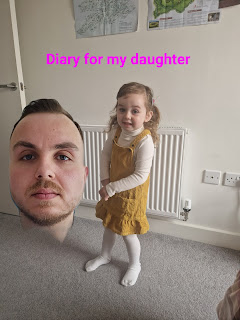Diary for my daughter 26.07.2023 - Dacian Fortresses of the Oraştie Mountains
Hello, my little penguin 🐧!
Tata here!
Hope you're well!
Tata is fine today! I am with the car at the service, and that will take a while as they are quite a few things to fix. After I finish here, I am going back to Hertford, and later on, I will go to Hitchin and Letchworth for deliveries with GoGetters. Yesterday in Bishop's Stortford was quiet, not so many deliveries, I was made more at Amazon in the morning than the rest of the day 😀. It will be a busy day ahead. So ... let's go to your today story...
Dacian Fortresses of the Oraştie Mountains
Built in murus dacicus style, the six Dacian Fortresses of the Orăștie Mountains (Romanian: Cetăți dacice din Munții Orăștiei), in Romania, were created in the 1st centuries BC and AD as protection against Roman conquest, and played an important role during the Roman-Dacian wars.
Their extensive and well-preserved remains present a picture of a vigorous and innovative ancient civilization.[citation needed] Today, treasure-hunters sometimes search the area, as Romania lacks legislation in this domain.[citation needed]
The six fortresses - Sarmizegetusa Regia, Costeşti-Cetăţuie, Costeşti-Blidaru, Piatra Roşie, Bănița and Căpâlna - that formed the defensive system of Decebalus were designated as a UNESCO World Heritage Site in 1999. All the sites are in Hunedoara County, except for Căpâlna, which is in Alba County.
Sarmizegetusa Regia
The town of Sarmizegetusa Regia was the capital and major fortress of the Dacian kingdom, probably built in the mid first century BCE. It consisted of perimeter walls and fortifications, a sacred precinct, and a settlement area primarily for nobles and supporting servants. It was located at the top of a 1200-meter hill with excellent visibility of the surrounding lands. The sacred precinct was on the east side of the town, with a prominent plaza and circular shrines. There were two settlement areas one on the east side and a larger one on the west. In addition to dwellings they included workshops, storage buildings, and agricultural processing areas. Notable for the time is a distribution system for drinking water that used ceramic pipes.
Piatra Roșie
Piatra Roșie, which means Red Rock, was a Dacian hill fort two days march to the west from Costești-Cetățuie, at Luncani in Boşorod municipality. It was built in two phases. In the first phase a long (102 m) rectangular main citadel was built at the height of land with watch towers on each end and two outlying watch towers. Later the larger area inside the watch towers was enclosed with walls. It appears that the hilltop was flattened in the process in order to produce a usable space.
And that's was your today story. Tomorrow we will learn about Heroes' Cross on Caraiman Peak.
Until tomorrow...
Be nice!
I'm so sorry that another day passed and I didn't hug you! Please forgive me!
I miss you so much, my little penguin 🐧!
I love you infinite ♾️!




Comentarii
Trimiteți un comentariu